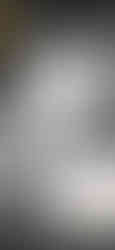Digital Prep For Screen Printing
- Maximilian Lyons

- Oct 20, 2020
- 3 min read
If you want to know how to turn a photo or image into something that can be printed onto t-shirts and other apparel then you have come to the right place. From photo to screen-ready image, this tutorial will show you how to prepare your visuals using only a computer or smartphone, and one fantastic app available for FREE from the app store.

Utilising the Imaengine app we will focus on turning an image into just black & white. This is an essential step in the process before putting your image onto a screen to be printed. What makes this technique creative and fun is Imaengine's ability to add stylised filters to your images, creating interesting aesthetics and at the same time making it unique. If you don't have the Imaengine app yet then click here and you'll be redirected to the app store.
Step A
Chose your image & make sure its large enough to show lots of detail and it's not pixelated (at least 1000pixels width & height).

Step B
Open Imaengine and import your image.
Step C
Activate the filter you want. If you're planning to screen print your design then it needs to be a filter that's black and white or close to it. We have chosen the 'aMorpho' filter as it stylises the image and it's also very close to what we need for the processes of screen printing. Play around with the filter slider bars until you get the desired effect. Notice the image has hues of red in the light and dark areas of the image. We will fix this in Step D below.
Step D

Now click the editor button which is the paintbrush icon at the top middle of the app screen. This will open up a new area with new menus and options for editing.
Make yourself familiar with the menu at the bottom of the app screen as we will be using a few of the items in this menu throughout this tutorial. The first one is going to be the palette menu so that we can remove the colour from the image.
With the positive (white) layer selected in the palette menu, use the sliders to increase all the channels (red, green & blue) to their maximum value of 255, making the positive layer true white.
Select the negative (black) layer now in the same palette menu as before, and adjust the sliders to decrease all channels to zero (0) making it true black.
Step E

Select the layers menu. There are two layers available because we chose the aMorpho filter in Step C for this tutorial but if we had used another filter then this layer stack would be different.
Increase the black layer (layer #1) visibility to 100% and decrease the white layer (layer #2) visibility to 0%. Or you could increase the black layer visibility to 100% and delete the white layer, either will work.
So if you have successfully completed these steps then your image should look something like the image above with a checker pattern background - this indicated that has areas of transparency. Perfect!
Step E
Now save your image in any of the available formats that you need.
IMPORTANT: If you require the image to have the transparency then export as PNG instead of JPEG.
The screen printer will need the black and white image printed on transparent film to make a screen. Most stationary stores will be able to do this cheaply, or you can do it at home on a desktop printer.

I think we will leave the creative colour concepts up to you!
We hope you enjoy this information sharing and that it helps your creative process as it has ours.
If you like these tutorials and would like to learn more or have any suggestions on what you would like to learn about then send us a message via the contact page. We would love to hear from you!

























Comments